#TU Delft Architecture
Text
Apply Now: TU Delft QuTech Scholarship 2023 Study In Netherlands
Apply Now: TU Delft QuTech Scholarship 2023 Study In Netherlands
TU Delft QuTech Scholarship 2023 – TU Delft QuTech scholarship program 2023 applications are opened for the students to apply for this scholarship program to study in Netherlands. QuTech scholarship 2023 is provided by the Delft University of Technology (TU Delft) to the students to study their degree program. International students who want to study their degree program in Netherlands and that…

View On WordPress
#Apply Now: TU Delft QuTech Scholarship 2023 Study In Netherlands#Delft University of Technology#Holland Scholarship#Holland Scholarship TU Delft#Maastricht University Scholarship#TU Delft application fee#TU Delft application procedure#TU Delft Architecture#TU Delft courses#TU Delft fees#TU Delft PhD vacancies#TU Delft Ranking#TU Delft scholarship BSc#TU Delft Scholarship Program in Netherlands 2022 Fully Funded#TU Delft transfer
0 notes
Text
Corvus (boarding device)
The corvus (meaning "crow" or "raven" in Latin) was a Roman naval boarding device used in sea battles against Carthage during the First Punic War.

....Despite its advantages, the boarding bridge had a serious drawback since it could not be used in rough seas, the stable connection of two working ships endangered both ships' structures. When operating in rough conditions, the device became useless as a tactical weapon.[1] The added weight on the prow may have also compromised the ship's navigability, and it has been suggested that this instability led to Rome losing almost two entire fleets during storms in 255 and 249 BCE.[1] Those losses may have contributed to Rome abandoning the boarding bridge in ship design over time.
However, a different analysis suggests that the added weight did not threaten ship stability. JW Bonebakker, formerly Professor of Naval Architecture at TU Delft, used an estimated corvus weight of one ton to conclude that it was "most probable that the stability of a quinquereme with a displacement of about 250 m3 (330 cu yd) would not be seriously upset" when the bridge was raised.[1]
Regardless of the reasons, it appears that Rome was no longer using the corvus at the end of the First Punic War....
look at this fucking thing
#were they stupid????#I'm not even very interested in military tech/history personally but Lmao#my posts#my uploads#my uploads (unjank)#wiki#roman empire#history
3 notes
·
View notes
Text
Cognitive Architecture. From Biopolitics to Noopolitics. Architecture & Mind in the Age of Communication and Information
Cognitive Architecture. From Biopolitics to Noopolitics. Architecture & Mind in the Age of Communication and Information
Crossover is the very first publication by the Delft School of Design (DSD), a laboratory for research and experimentation in architecture, urbanism and technologies of construction at the TU Delft. Its investigations cover a wide variety of subjects, from theoretical considerations and historical studies to urban and architectural practices and contemporary structural design. What they all have…
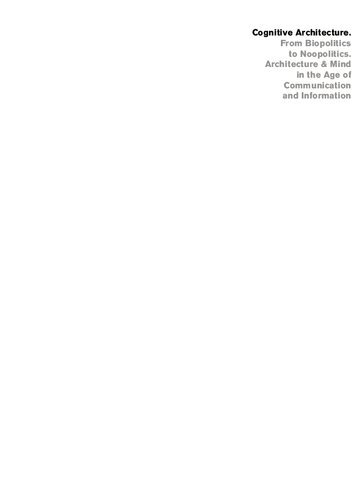
View On WordPress
2 notes
·
View notes
Text
Study architecture in Europe

Study architecture in Europe
Europe offers diverse and renowned architecture programs.
Consider exploring options like the Architectural Association
School of Architecture in London, ETH Zurich in Switzerland,
or TU Delft in the Netherlands. Research each program's curriculum,
faculty, and admission requirements to find
the best fit for your academic goals in architecture.
https://italy.foreignsphere.com/
Study architecture in Europe
1 note
·
View note
Text
Donderdag 2 november zijn de winnaars bekendgemaakt van de Energie uit de wijk Challenge 2023-2024. In totaal streden elf bewonersinitiatieven om een geldbedrag en de titel: Haagse Energie Topper 2023-2024. In totaal werd het resterende subsidiebedrag van € 245.000 na de eerste ronde uitgekeerd. Het geld gaat naar projecten van buurtbewoners die in hun wijk, buurt of straat samen de overstap naar schone energie maken in 2024.
De elf geselecteerde initiatieven presenteerden hun project aan een onafhankelijke adviescommissie. Onder leiding van voorzitter en directeur Duurzaam Den Haag Joris Wijsmuller zijn vandaag zeven initiatieven geselecteerd. Ze moeten binnen één jaar tastbare resultaten behalen.
Wethouder Arjen Kapteijns (Energietransitie, Mobiliteit en Grondstoffen): "We wilden vooraf projecten uit alle delen van de stad uitnodigen om mee te doen. Dat is goed gelukt en daar ben ik heel trots op. De kracht van deze challenge is dat er ideeën zijn ingediend voor de overstap naar schone energie die niet altijd passen binnen bestaande regelingen."
Dit zijn de zeven gekozen bewonersinitiatieven:
Groen Roemer Visscher College - Moerwijk en Zuiderpark: de school wil het gebouw, het onderwijs verder verduurzamen en ook de buurt laten meeprofiteren van opgewekte energie.
Verduurzamen Oranjeflat 2, Zeekant, Scheveningen: de VvE gaat onderzoeken of door het toevoegen van een woonlaag op het gebouw, er budget beschikbaar komt voor het verduurzamen van het pand.
Duinoord onder de kurk: bewoners in Duinoord gaan een proef doen met sedum-kurkcassettes op platte daken zodat hun woningen warm blijven in de winter en koel in de zomer.
Energieke Waterscouting Stichting Groepshuis MacDonald: verduurzamen en slim koppelen van energie van gebouw en schepen samen met studenten van de Haagse Hogeschool.
Duurzame Enterprise in de Binckhorst: zij gaan in samenwerking met jeugd en de buurt het schip 'Enterprise' van het Zeekadetkorps Den Haag verduurzamen.
Living Lab Vruchtenbuurt: zij gaan buurtbewoners actief betrekken bij hun plannen voor opwek, opslag en verdeling van energie in hun wijk.
Overkapping Hofje Wagenstraat: de VvE van de Wagenstraat 156 t/m 174 willen een glazen overkapping met zonnepanelen plaatsen. Zo wekken ze stroom op en isoleren ze de oude huisjes.
De bewonersinitiatieven die niet zijn geselecteerd, willen ook een bijdrage aan de overstap naar een stad op schone energie leveren. Zij worden door de gemeente met advies op weg geholpen. De bekendmaking van de nieuwe Energie Toppers vond plaats tijdens de Haagse Klimaatweek die nog loopt tot en met 5 november. https://denhaag.nl/klimaatweek
Winnaars eerste ronde
Eind juni werden in de eerste ronde van deze Challenge al drie bewonersinitiatieven geselecteerd. Dat waren:
Ventilatie met Zonnewarmte - Stichting Hernieuwbare Warmte Ypenburg (Archipelbuurt en Willemspark, Bezuidenhout, Leidschenveen en Forepark)
Hâgse FIKSTeam - Stichting Stagehuis (Schilderswijk, Transvaal en Groente- en Fruitmarkt)
Voedsellokaal De Gymzaal verduurzamen - Stichting Lokaal Voedsel Den Haag (Centrum)
Adviescommissie
De adviescommissie bestond dit jaar uit:
Joris Wijsmuller, Directeur Duurzaam Den Haag
Rabia Zurel, Haagse Jongerenambassadeur
Gijs Termeer, Directeur Klimaatbureau HIER
Professor Laure Itard, Professor of Building Energy Epidemiology at the Faculty of Architecture and the Built Environment, TU Delft
Marcus Banai, Coördinator energiecoaches
Wilbert Schouten, voormalig Haagse Energietopper project VVE De HobbeVen, Schilderswijk
Waarom een Energie uit de Wijk Challenge?
Den Haag kent veel inwoners met een goed idee voor de overstap op schone energie of het besparen of opslaan van energie. Aan energie, creativiteit en enthousiasme ontbreekt het meestal niet maar toch blijven sommige van die initiatieven steken in de 'planfase'. De challenge is er om ondernemende bewonersgroepen in Den Haag te helpen hun eigen buurt
een stap verder te brengen en de overstap te maken van fossiele brandstoffen naar schone energie.
Dit is de vierde editie van de Challenge. Sinds 2019 stuurden bewonersgroepen al 112 plannen in. In totaal zijn nu al 36 bewonersgroepen tot Haagse Energie Topper gekozen.
Meer informatie
duurzamestad.denhaag.nl/challenge
0 notes
Text
Soft, elephant trunk-like robot for close interaction with humans
26.10.23 - EPFL researchers have designed a bio-inspired robot with a novel trimmed helicoid structure that allows for a wide range of motion and safe interaction with humans.
At EPFL's CREATE lab, under the guidance of Josie Hughes, a breakthrough has been made in the realm of soft robotics. Drawing inspiration from the versatile movement of elephant trunks and octopus tentacles, the team introduced the trimmed helicoid — a novel robotic structure that promises greater compliance and control in robotic designs. With a blend of keen biological observation and computational modeling, the researchers have now unveiled a soft robot arm capable of intricate tasks, ensuring safer human-robot interactions. The findings, detailing both the structure and methodology, are a collaboration with the Department of Cognitive Robotics at TU Delft and were published in Nature's new journal, npj Robotics.
Professor Hughes highlighted the importance of this development: "Through the invention of a new architectured structure, the trimmed helicoid, we've designed a robot arm that excels in control, range of motion, and safety. When the novel architecture is combined with distributed actuation— where multiple actuators are placed throughout a structure or device—this robot arm has a vast range of motion, high precision, and is inherently safe for human interaction." A soft, flexible robot safe for interaction with humans © 2023 EPFL/Alain Herzog - CC-BY-SA 4.0
Whereas traditional robots are rigid, often making them unsuitable for delicate tasks or close human interactions,CREATE's soft robot arm is designed for safer interactions with humans and adaptability to a wider range of tasks. With an unprecedented combination of flexibility and precision, the soft and compliant nature of the arm reduces potential risks during human-robot interactions. This opens doors for its application in healthcare, elderly care, and more. Unlike their rigid counterparts, the soft robot arm can adapt to different shapes and surfaces, making it an ideal tool for intricate tasks like picking fruits or handling fragile items. In industry, it might become the go-to solution for delicate assembly lines, working alongside humans, augmenting their capacity instead of replacing them. The agricultural industry could also benefit from its gentle touch in handling crops, accompanying workers to lessen their workload during intense harvesting periods.
The crux of the research lies in the robotic arm’s novel architecture. The researchers have creatively modified a spring-like spiral, which they call a 'helicoid', by trimming parts of it to give it diverse functionalities. This seemingly simple act has allowed them to precisely control how flexible or stiff the spiral becomes in different directions. By adjusting its shape, they can make the inner part resistant to being squashed and the outer part flexible enough to bend easily. With this special design, they've created a soft robot that can move and act in ways previously unseen, showing the kind of dexterity and soft touch found in nature, like in an elephant's trunk or an octopus's tentacle.
"By observing these animals and developing a novel architectured structure, we aim to mimic this range of motion and control found in Nature," Josie Hughesnoted. To do so, the team employed advanced computer modeling to turn observations into tangible results. Using these models, they iteratively tested their innovative spiral designs — into a final trimmed helicoid shape. Qinghua Guan and Francesco Stella, who spearheaded the actual creation of the robot, gave insights into the design and optimization process: "We introduce a specific surface into the computer model, then trim and adjust. Computational methods guide us, helping assess the optimal geometric structure for maximum workspace and compliance." The result? A robotic creation, drawing from nature, but refined with precise human ingenuity and computer… http://actu.epfl.ch/news/soft-elephant-trunk-like-robot-for-close-interacti (Source of the original content)
0 notes
Text
Dutch company makes bricks from cow-dung and agricultural waste
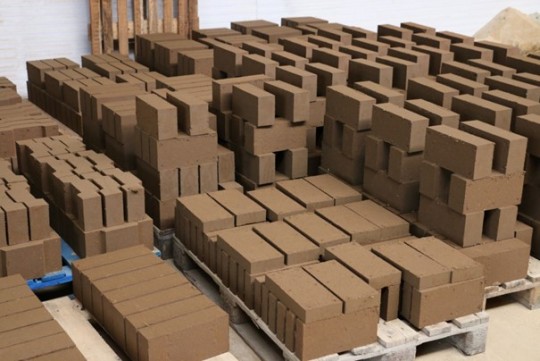
A Dutch company makes bricks from agricultural waste (biopolymers) and cow manure. The inventors got their inspiration from India, where houses are plastered with cow dung. According to the company, the bricks are waterproof, and even stronger and cheaper than traditional bricks. The company primarily focuses on Africa.
“Of course, we have a lot of cow dung in the Netherlands thanks to our cheese production," laughs CoolBricks[1] co-founder Emile Smeenk, "but the idea was originally conceived in India. The houses are built with earth (mud) and to prevent part of them from raining away, the walls are plastered with cow manure. But that keeps happening."
That is why creator Yask Kulshreshtha, in collaboration with the Delft University of Technology[2], tried to see if bricks could also be made from cow manure. "It turned out that they are not only water-resistant, but also stronger and half the price of traditional bricks," says Smeenk. "Cow manure has been used for thousands of years, but no one knew what the secret was," says Emile Smeenk of CoolBricks. The recipe? Sandy loam, fresh cow dung and remains of agricultural waste. "You press everything into blocks under high compression with a hand press and then dry them in the air."
"Our bricks do not have to be fired, unlike traditional bricks that are heated at high temperatures for days. That causes enormous emissions. Our bricks do not have that." Building with clay and earth has been happening for thousands of years and in some countries, such as India and Yemen, it still happens often. “There are many good examples worldwide, even buildings up to 7 floors high,” says Smeenk. "Parts of the Great Wall of China are also built from earth."
"We often think that new building materials, such as concrete, are much better. But it is not without reason that the old techniques have been so successful for thousands of years. It comes down to reinventing and improving those old techniques."
"We have had a pavilion in the Netherlands for 2.5 years now, a kind of test house. And despite the rain, wind and frost, the pavilion is still in extremely good condition. There is hardly any erosion. We expect our stones to have a lifespan of at least reach 50 years."
CoolBricks currently focuses mainly on African countries. "We have designed the process in such a way that you can make the bricks in the most remote village in Africa, with local products and without electricity. The first projects are now running in Uganda, but there is also potential in Western Europe."
Source
Wim De Maeseneer: Nederlands bedrijf maakt bakstenen van koeienmest en landbouwafval, in: VRT News, 6-09-2023, https://www.vrt.be/vrtnws/nl/2023/09/06/in-nederland-bouwen-ze-huizen-van-koeienmest/
[1] CoolBricks are 100% natural, bio-stabilized earthen bricks based on active ingredients derived from cow-dung. The key ingredients of CoolBricks are earth (mud), active ingredients derived from cow dung and a mix of additional biopolymers to optimize the formula. This mixture is compressed into a block, which results in a neat looking product. The same mixture can also be used for the mortar to further create cost advantages for our clients. The blocks are not fired and contain no cement, thereby making it truly 100% recyclable and environment-friendly. https://www.thecoolbricks.com/
[2] The Delft University of Technology (TU Delft; Dutch: Technische Universiteit Delft) is the oldest and largest Dutch public technical university, located in Delft, Netherlands. As of 2022 it is ranked by QS World University Rankings among the top 10 engineering and technology universities in the world. In the fields of architecture and civil engineering, it was ranked 2nd in the world, after MIT (Massachusetts Institute of Technology).
0 notes
Text
Moving art at the MAD museum, Stratford-upon-Avon, UK, June 2023:
2 million years
always a different composition for the next 2 million years
(60 x 60 × 12 cm, steel & polyacetal - 2013) artist: Lukas van de Vrande, NL
Push the button and create your own sculpture. The sculpture will always create and show a unique pattern. Always? Yes, for the next 2 million years it will always make a new composition of stripes, every time you press the button.
2 million years ago the first human beings appeared on earth. They could not make fire yet and presumably they could not speak with each other.
How does it work?
As you can see, the sculpture has a total of 10 gears. The gears have teeth. The number of teeth of the gears are 17, 19, 23, 26 (which is 2 x 13), 29, 31, 33 (which is 3 x 11), 35 (which is 5 x 7), 37 and 41 wich are all prime numbers. So, in order to get all the gears in the same direction and in order to position all the stripes at the exact same place as they are right now, we need 2 x 3 x 5 x 7 × 11 x 13 x 17 x 19 x 23 x 29 × 31 × 37 × 41 = 304.250.263.527.210 teeth to pass by. In mathematics this is referred to as the least common multiple'. Our large number is the smallest number that can be divided by all our prime numbers.
We can see that 5 teeth pass in one second. This means that all gears rotate with a speed of 5 teeth per second, because all gears are connected. Now we can calculate how long it will take before the pattern of stripes in the sculpture repeats itself:
304.250.263.527.210 / 5 = 60.850.052.705.442 sec. = 1.014.167.545.090 min. =
16.902.792.418 hours = 704.283.017 days = 1.928.211 years
Just for fun, I gave the largest gear wheel in de the centre 199 teeth, which is also a prime number. The composition of the stripes repeats itself every 2 million years, but when we calculate the time before all gears are in the same position, we find 199 × 2 million years = 398 million years.
398 million years ago there were no human beings or dinosaurs on earth. All continents were connected and there were fish in the sea. On the land there were only plants with a maximum of one meter. In the future, this machine can repeat itself 11 times before the sun burns out.
Lukas van de Vrande is a Dutch artist who lives and works in The Hague. He studied Industrial Design and Architecture at the TU Delft, Italian Language at the University of Amsterdam and Mathematics at the University of Utrecht. In his artworks he likes to combine art with science. For more artworks and products: www.LukasArt.nl.
This machine has been funded with the help of the Mini-Mecenae of LukasArt.
1 note
·
View note
Photo
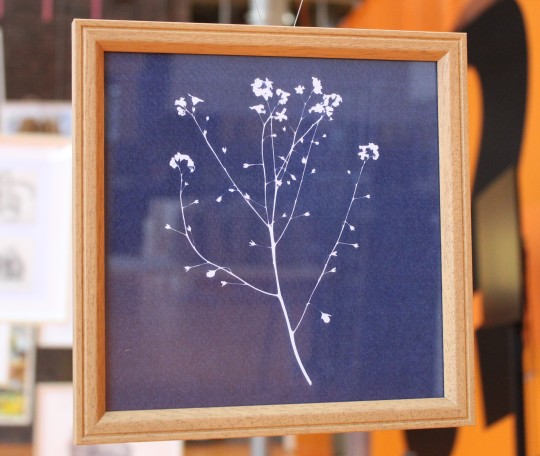
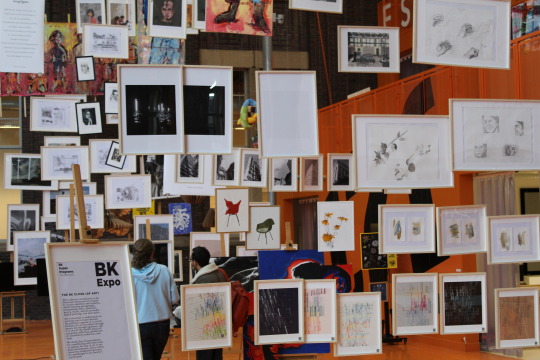
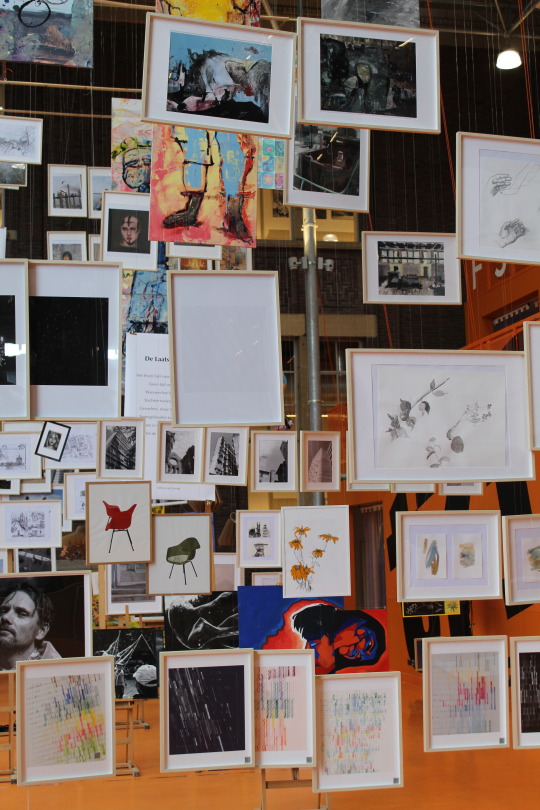
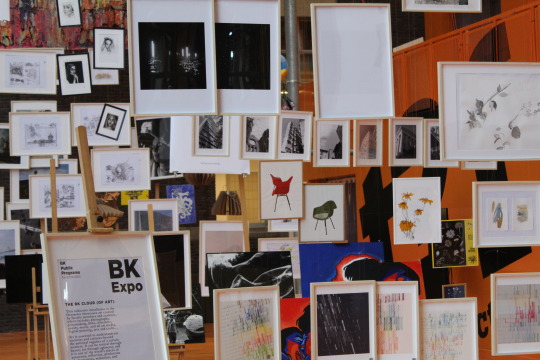
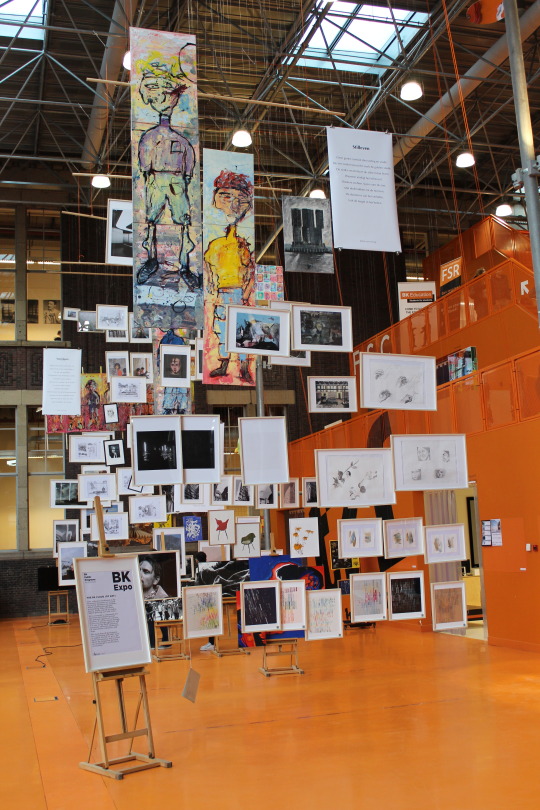


'Catch the Flavor' was featured in 'The BK Cloud (of Art)', an art installation currently on display at TU Delft's Faculty of Architecture and the Built Environment (The Netherlands).
The installation features photography, 2D sketches, paintings, sculpture, poetry and audio-visual art suspended from the Orange Room ceiling.
Credits: Hidekazu Imashige (sound), EiramsAccord (essential oil) and D.R. Taylor (artwork).
Purchase the album
1 note
·
View note
Text

TU Delft Faculty of Architecture [Delft, The Netherlands]
1 note
·
View note
Text
10 Reasons to do Postgraduate Studies in Netherlands
The Netherlands is not only a country known for its beautiful architecture and picturesque landscapes but also for its higher education institutions. The Netherlands has achieved global recognition for excellence in teaching, attracting thousands of international students annually. If you are looking to study in the Netherlands, here are the top ten reasons why the country should be your top choice!
https://www.jeduka.com/storage/newsletter/1663216773_Reasons_to_do_Postgraduate_Studies_in_Netherlands.png
1. Highest English Proficiency in the World
The Netherlands is a one-of-a-kind non-English-speaking country, with approximately 95% of the population speaking English. It makes international students who want to study abroad feel convenient, comfortable, and pleasant to live, work, and study in Netherlands.
2. Top Ranked Universities and Quality Education
The Netherlands has 13 globally-ranked universities in QS's World Rankings 2023, which is pretty good. Since the 16th century, its higher education institutes have been internationally recognized. Studying in Netherlands equals invaluable knowledge and experience. Below is the list of top ranking Universities in Netherlands:
Delft University of Technology
University of Amsterdam
Eindhoven University of Technology
University of Groningen
Leiden University
3. Renowned Technical Programs and Research
As it can be seen, with institutes like TU Delft and TU Eindhoven, the Netherlands boasts world-class research output regarding Technical Universities. Besides that, being the origin of brands like Heineken, Shell, Unilever, and Philips, the Universities are close to these companies' research and training facilities.
4. Problem-Based Learning
The Netherlands has received worldwide acclaim for its innovative problem-based learning system. This helps students analyze and solve practical problems independently through prominence on self-study, which makes the Netherlands different from the crowd.
5. Study in English in Netherlands
The Netherlands is considered the first non-English speaking country in which most of the top universities in Netherlands have started higher education study programs in English Universities in Netherlands. They have almost offered more than 1000 English-taught study programs and courses. It simply sounds excellent that The Netherlands is high-quality, Low-cost education offered in many disciplines & open-minded countries. Not only the Netherlands but these are also some of the best Universities in Europe
6. Truly International Study Environment
You will find International students from countries like Germany, China, Belgium, India, Italy, and Spain. Most Netherlands universities have international student associations committees which help international students throughout their studies.
7. One of the Happiest Countries in the World
Not only the happiest, but the Netherlands is also one of the safest countries in the world. With results from many organizations favoring the Netherlands as one of the safest and happiest cities in the world, you cannot ignore the probability of good quality while you study in Netherlands.
8. Affordable Education
The Netherlands will give you actual value for money. The Dutch government subsidizes education, and tuition fees are relatively low. The average tuition fee is lower than in the USA. Even by European standards, studying in the Netherlands is inexpensive. You will get a quality education without burning a hole in your pocket.
9. Multicultural Society in the Heart of Europe
Taking the above point further, the Netherlands is a very open and tolerant country that welcomes everyone to share their opinions and express themselves. This is very much encouraged during your studies while living in the Netherlands.
10. Netherlands Scholarships and Grants
Scholarship support is available through both the Dutch government and higher education institutions, which adds to the reasons why the Netherlands is one of the top choices for international scholars. Scholarship opportunities include The Netherlands Fellowship Programs, The Erasmus Mundus Program, Leiden University Excellence Scholarships, Radboud Scholarship Program, etc.
The Netherlands is a place of rich history, filled with fascinating monuments and sites to explore. Postgraduate studies in the Netherlands will open newer opportunities for you by improving your knowledge, techniques, and experience, which can help you grow in every field. Whatever you decide, we wish you all the best in your career.
Source:
0 notes
Photo
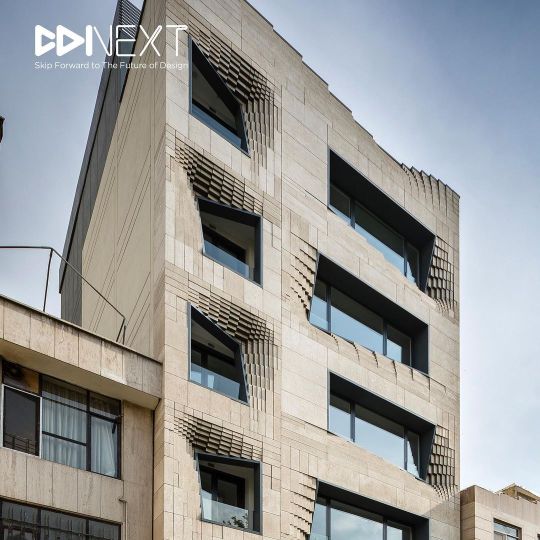
Sina Mostafavi @sinamostafavi, (Ph.D. TU Delft, M.Arch, B.Sc.) architect and researcher associate professor (SL) at University of Huddersfield, UK, and founder and CEO of SETUParchitecture studio, will be delivering a lecture and answering questions at the Computational Design: NEXT 10 conference. - Join now, link in bio or: https://parametric-architecture.com/cd-next/ - Event details: Date: July 16-17, 2022 (Saturday & Sunday) Time: 12:30 - 20:30 UTC Where: ZOOM Online - Dr. Sina Mostafavi is a Senior Lecturer (Associate Professor) in the Department of Architecture and 3D Design in the School of Arts and Humanities at the University of Huddersfield, UK. As an experienced researcher, practicing architect, and educator with computational design and architectural robotics expertise, Mostafavi’s research focuses on the innovative application of emerging materials and technologies for integrated design and circular production. He holds a doctoral degree from TU Delft, where he has been a senior researcher and the manager at the robotic building lab of Hyperbody Research Group. @cdnext @parametric.architecture @designmorphine @ekimroyrp @pa.next @hamithz @thepaacademy #3dmodels #architecture #3dmodeling #architecturestudent #archilovers #archdaily #architecturephoto #architectureporn #superarchitects #designers #architecturelovers #designinspiration #next_top_architects #architecturelife #sketchup #generativedesign #grasshopper3d #architecturepresentation #blender3d #designtips #designadvice #digitalart #parametricarchitecture #architecturefactor #designmotivation #careertips #tipsforsuccess #amazingarchitecture #nextarch #archviz (at 𝓣𝓱𝒆 𝓤𝒏𝒊𝓿𝒆𝒓𝒔𝒆) https://www.instagram.com/p/Cfin43GOkkr/?igshid=NGJjMDIxMWI=
#3dmodels#architecture#3dmodeling#architecturestudent#archilovers#archdaily#architecturephoto#architectureporn#superarchitects#designers#architecturelovers#designinspiration#next_top_architects#architecturelife#sketchup#generativedesign#grasshopper3d#architecturepresentation#blender3d#designtips#designadvice#digitalart#parametricarchitecture#architecturefactor#designmotivation#careertips#tipsforsuccess#amazingarchitecture#nextarch#archviz
1 note
·
View note
Photo

Barlaeus Gymnasium, Amsterdam \\ 02 Sep. 2020
2 notes
·
View notes
Photo
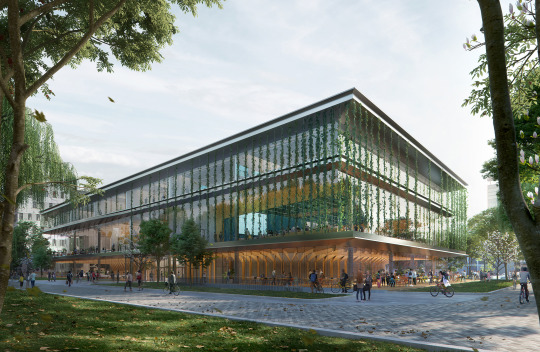
UNStudioが設計するオランダ、デルフト工科大学の多機能で柔軟な使用に応える新キャンパス「Echo」(ArchDaily)
UNStudio Designs a Multifunctional and Flexible Education Building for TU Delft in the Netherlands (ArchDaily)
1 note
·
View note
Photo
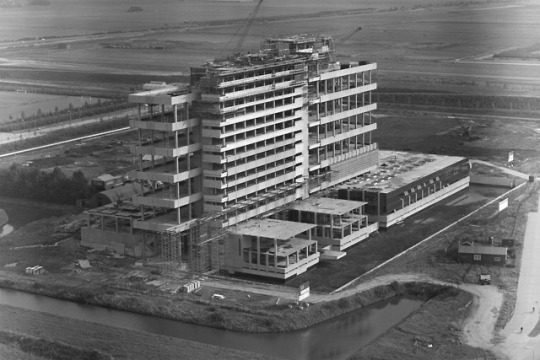
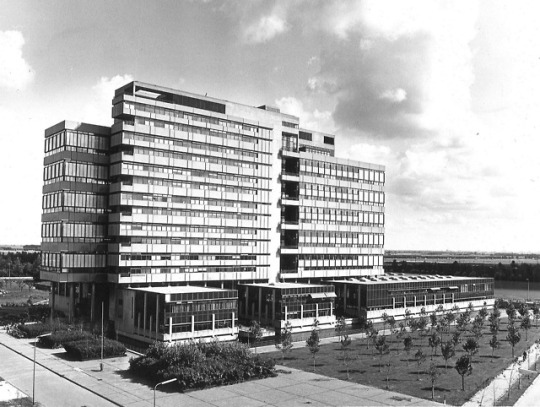
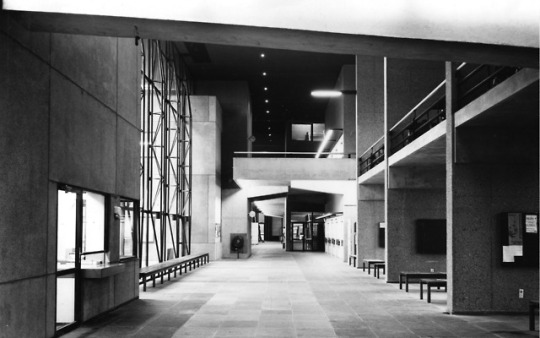

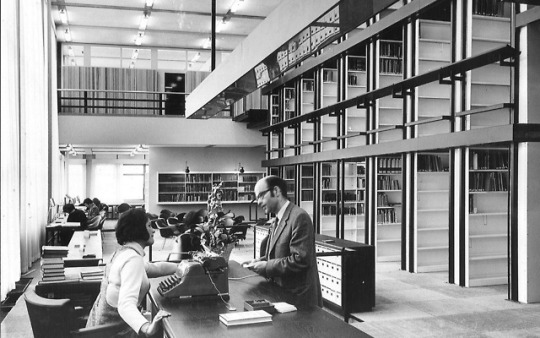
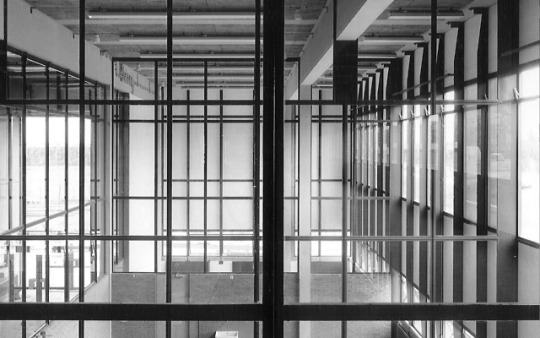
bouwkunde tu delft
het treurigste gevoel dat ik ken is de weg te weten in een gebouw dat niet meer bestaat. rudy kousbroek.
on the 13th of may 2008 a broken water pipe caused a short circuit in a coffee machine. it lead to a fire that consumed almost the entire building.
#tu delft#bouwkunde#brand#architecture#faculty#fire#brutalism#van den broek#bakema#delft#in memoriam
681 notes
·
View notes
Text
De Bouwerscompetitie biobased en natuurinclusieve sociale huurwoningen in Leeuwarden Nieuw Oud Oost is vandaag van start gegaan. Sociaal verhuurbedrijf WoonFriesland, het College van Rijksadviseurs (CRa) en de gemeente Leeuwarden slaan daarvoor de handen ineen. Wie heeft het beste plan voor het ontwerpen en realiseren van biobased en natuurinclusieve sociale huurwoningen? De bouwerscompetitie is onderdeel van het programma 'Een Nieuwe Bouwcultuur' van het Cra.
Leeuwarden Nieuw Oud Oost
Leeuwarden Nieuw Oud Oost is de plek waar Sportclub Cambuur jarenlang haar wedstrijden gespeeld heeft. Sportclub Cambuur vertrekt echter uit de wijk Oud Oost en krijgt een nieuwe plek bij het WTC. Dat biedt kansen en geeft ruimte voor nieuwe ontwikkelingen. Als onderdeel van Nieuw Oud Oost wil WoonFriesland 45 – 50 sociale grondgebonden huurwoningen realiseren.De woningcorporatie roept teams van ontwerpende, adviserende én uitvoerende partijen op een ontwerp te maken voor een bouwveld in Leeuwarden Nieuw Oud Oost, en ook de woningen daadwerkelijk te bouwen.
Biobased en natuurinclusief
De woningen dienen biobased, natuurinclusief, betaalbaar en passend in de omgeving te zijn. Het doel van de opgave is dat minimaal 85% van het bouwvolume uit biobased materialen bestaat. Een tweede speerpunt is natuurinclusiviteit. Onderdeel van de opdracht is ook de buitenruimte van het binnenterrein. Hoewel het geen verplichting is om met fabrieksmatige woonoplossingen te komen, is het voor de hand liggend dat dit deel uitmaakt van de voorstellen.
Deelname, reglement en vragen Bouwerscompetitie
De bouwerscompetitie wordt uitgeschreven door WoonFriesland in samenwerking met het College van Rijksadviseurs (CRa) en gemeente Leeuwarden. De eerste fase van de openbare selectieprocedure is de voorselectiefase, die 13 september 2023 van start gaat. In de voorselectiefase kunnen alle (combinaties van) marktpartijen(en) een aanmelding indienen.
Het wordt aangemoedigd om samen met anderen een aanmelding in te dienen, zoals bijvoorbeeld een aannemer samen met een architect, een technisch adviesbureau en een ecoloog. De prijsvraag verloopt geheel digitaal volgens het reglement Een nieuwe bouwcultuur – Bouwerscompetitie biobased en natuurinclusieve sociale huurwoningen in Leeuwarden Nieuw Oud Oost. Het reglement en de bijlagen kunnen worden gedownload op TenderNed. De vragenronde staat open tot 18 oktober 2023.
Aanmelding
Geïnteresseerden in deelname kunnen zich aanmelden door inzending van een visie op de opgave. Die visie bestaat uit een tekstuele/mondelinge presentatie, ondersteund met o.a. eigen referenties en schema's. Een selectiecommissie selecteert maximaal drie portfolio's. De inzenders hiervan worden uitgenodigd om deel te nemen aan de selectiefase.
De aanmeldingstermijn sluit woensdag 8 november 2023 om 12.00 uur (middag).
Vervolg
Op de voorselectiefase volgt een selectiefase. De winnaar daarvan gaat vervolgens aan de slag met de ontwerpfase, gevolgd door de bouw van de woningen.De beoogde start van de bouw van de woningen is september 2024.
Jury
De jury is onafhankelijk van de deelnemers en bestaat uit:
• Francesco Veenstra, Rijksbouwmeester (voorzitter)
• Sigrid Hoekstra, Directeur-bestuurder WoonFriesland
• Loes Oudenaarde, Stadsbouwmeester gemeente Leeuwarden
• Mo Smit, initiator Bouwtuin / docent en onderzoeker Architectural Engineering, TU Delft
• Remco Daalder, bioloog, schrijver en voormalig stadsecoloog
Initiatief
De Bouwerscompetitie biobased en natuurinclusieve sociale huurwoningen in Leeuwarden Nieuw Oud Oost is een initiatief van het College van Rijksadviseurs (CRa). Het initiatief wordt ondersteund door het Ministerie van Binnenlandse Zaken en Koninkrijksrelaties, het Ministerie van Landbouw, Natuur en Voedselkwaliteit, het Ministerie van Onderwijs Cultuur en Wetenschap, het Rijksvastgoedbedrijf en Staatsbosbeheer.
0 notes